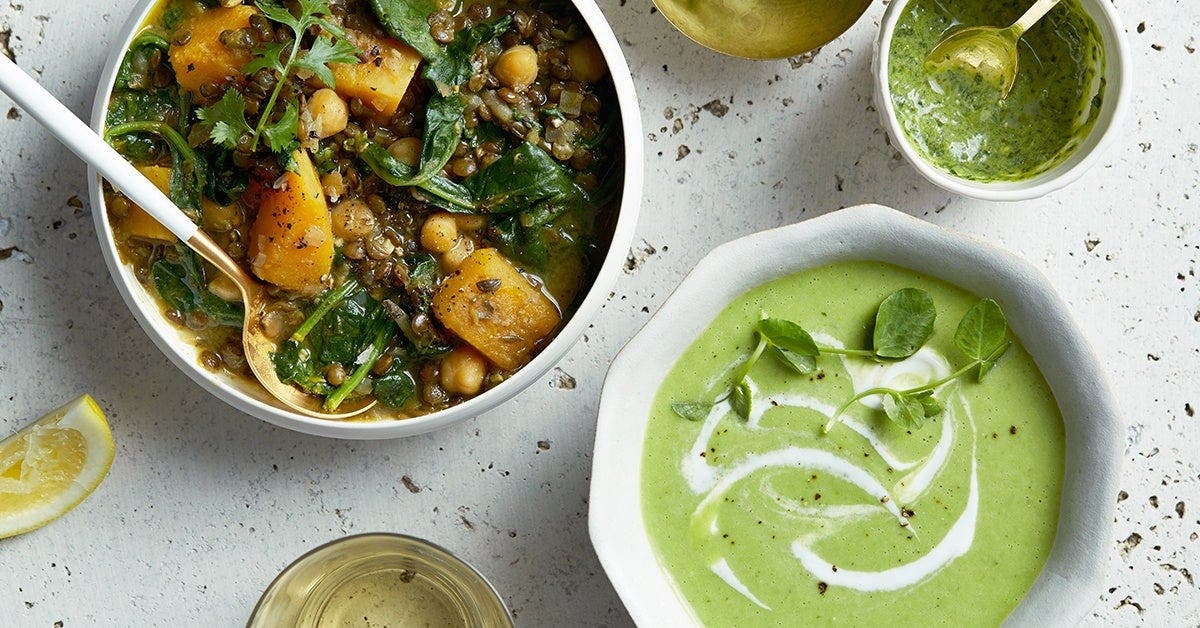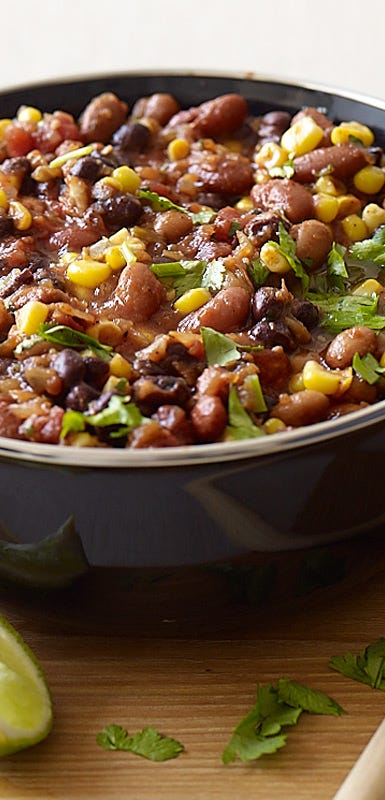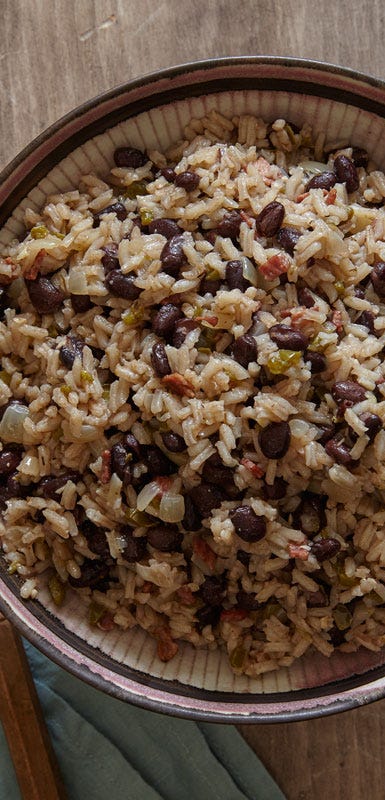How to get your protein from plants


If you’re looking to try a more plant-based diet—one that scales back on animal-based foods—you may be wondering how you’re going to eat enough protein. Rest assured: You don’t need to scarf down sirloin burgers to avoid missing out on this nutrient, says Jaclyn London, MS, RD, CDN, head of nutrition & wellness at WeightWatchers®. Eating a variety of plant-based sources can help you get the protein you need.
Meat, eggs, and dairy are rightfully known for being high in the macronutrient, but they aren’t the only sources, London explains. For comparison, a 4-oz portion of 90% lean ground beef contains 23 g of protein, while 1 cup of cooked, shelled edamame packs 18.5 g of protein. Based on the USDA’s most recent dietary guidelines, most women need about around 46 g of protein per day, and men need 56 g. Edamame is no slouch!
What’s more, using plant-based sources of protein can be a delicious way to make your meals more varied and interesting. Read on for a guide to some favorites (including a few that might surprise you), how to use the foods in place of meat, and some protein-rich, plant-based recipes to get you started.
Top plant-based protein sources
Get ready to diversify your menu with these all-star plant proteins, plus recipes for tasty meals and snacks.
Tofu
Tofu sometimes gets a bad rap for being bland, but its mild taste actually places it among the most versatile sources of lean, plant-based protein. Tofu stands up to a range of cooking methods and readily takes on the flavor of whatever seasonings you throw its way. Nutritionally, it has 10 g of protein per ½ cup serving, and is low in saturated fat and high in polyunsaturated fats, according to the USDA.
The key to working with tofu is to nail the type. “Buy firm or extra-firm tofu for stir-fries, kebabs, and other recipes where you want to slice it into cubes,” says Leslie Fink, MS, RD, a nutritionist and recipe editor at WW. “Firm tofu will keep its shape.” Silken tofu, on the other hand, has a soft, custardlike texture that makes it a good swap for mayo or cream in dips, sauces, soups, and deli-style salad recipes.
Plant-based meat
This section contains sponsored content.
Companies such as Beyond Meat® have introduced plant-based meats made to look, cook, and taste like the real deal. Protein amounts vary by product, but in general you can expect to get 11–20 g per serving thanks to ingredients derived from peas, mung beans, fava beans, and brown rice. Plant-based meats can also be a source of dietary fiber, an underconsumed nutrient in the U.S. you won’t find in animal meat.
“These products are great ways occasionally to switch things up as part of an overall shift to more wholesome plant-based foods,” says London. Head to the meat or frozen section of your grocer and you’ll find plant-based meat in familiar forms such as patties, sausages, and packages of ground product. Beyond Meat® also comes in a crumbled variety with 14 g of protein per serving and 2 SmartPoints across plans.
One point to keep in mind: Compared with animal meat, some types of plant-based meat products may be pre-seasoned, flavored, and/or made with additional oil—which can increase sodium and saturated fat amounts. That said, certain cooking and processing techniques of any food can increase its total calories and sodium content. Be sure you’re checking nutrition labels carefully to ensure you’re buying a product that’s aligned with your specific health goals and cooking needs.
Edamame
This is another great soy protein to add to meals or munch on its own—1 cup delivers a substantial 18.5 g of protein. Similar to peas in form and flavor, the green soybeans have a slight snap and mild taste that makes them a satisfying companion for a range of seasonings.
London encourages experimenting with form, too. “One way I’ve been enjoying edamame recently is as edamame ‘rice,’” she says. “It’s a higher-protein veggie alternative to cauliflower rice that’s equally tasty.” Look for premade riced edamame in your supermarket’s freezer case, or make your own by pulsing cooked edamame in a food processor until the pieces resemble grains.
Lentils
Kicking off the list of pulses—the dry, edible seed of beans, lentils, chickpeas and peas—are lentils. As a group, pulses are packed with protein, filled with fiber, and rich in minerals and B vitamins, London says. One cup of cooked lentils has 16 g of protein. Texture and flavor vary slightly between specific types (brown, green, red and French), but they’re all tasty!
Some lentil fans like to prep a big batch at the start of the week, then add the lentils to salads, grain bowls, and more in the days that follow. Lentils are a popular swap for ground beef in skillet recipes—their small rounded shapes mimic the texture of crumbled beef. You can also use cooked lentils to thicken soups and stews: Try pureeing 1 cup and stirring it in as a base.
Jackfruit
Grown in tropical climates and regarded as the largest edible fruit in the world, jackfruit can reach up to 110 pounds. That’s why whole versions of this jumbo fig cousin are a relative rarity in U.S. supermarkets. You’re much more likely to find jackfruit in canned form, preserved before its sweet peak of ripeness for use in savory dishes. (It’s also sold in sweetened syrup, if dessert is more your thing.)
Jackfruit doesn’t contain as much protein as the other foods in this guide—1 cup delivers 3 g of protein—but its unique pull-apart texture makes it a popular substitute for pulled pork. All the fruit needs is a few minutes of cooking time to absorb whatever flavors you’re using (think barbecue sauce or pork seasoning). Try canned jackfruit in taco recipes, pulled pork sandwiches, and more. You’ll also get a dose of fiber, potassium, and vitamin C with your meal!
Black beans
Fun fact: Beans are considered a vegetable and a protein by the USDA, thanks to their versatility and stellar nutrient density. The same goes for lentils and chickpeas! Not only are beans packed with protein (1 cup of canned black beans has 15 g), they’re great sources of fiber, folate, and potassium.
There’s no difference in nutrients between canned and dried beans, London says, but canned versions may be high in added salt. If you’re watching your salt intake, look for canned beans labeled “salt-free,” “low sodium,” or “no salt added,” she advises.
Chickpeas
Part of the legume family, chickpeas have a mild flavor and firm texture that invites home cooks to get creative with seasonings and cooking styles. You might try roasting chickpeas for a crunchy snack, or blending them for a creamy hummus, experimenting with spicy or savory add-ins. One cup of drained chickpeas delivers 15 g of protein.
Want to up the plant profile of traditional baked desserts? Next time you drain a can of chickpeas, save the canning liquid, also known as aquafaba. The liquid can be used as a replacement for egg whites (2 tbsp of aquafaba = one egg white).
Peanuts and peanut butter
Whether toasted and chopped or ground to a creamy paste, peanuts are delicious in sauces, dips, spreads, sandwiches...We could go on. In truth, they’re not nuts but legumes. Peanuts are a bit higher in protein than nuts—a 1-oz serving contains 7 g of protein. For comparison, almonds, cashews, walnuts and pistachios contain 5–6 g of protein per 1-oz serving.
When you’re shopping for peanut butter, London recommends looking for a brand with as few added ingredients as possible. She likes peanut butter made from peanuts only, or with just a bit of salt. Powdered versions are an option, too—they’re lower in calories from fat, but have up to six grams of protein per 2 tbsp serving.
Nicole Saporita is a senior content manager for consumer wellness at WW. A writer, editor, and content strategist based in New York, she specializes in health & wellness, lifestyle, consumer products, and more. Her work has appeared in Good Housekeeping, Prevention, and REDBOOK magazines.





















